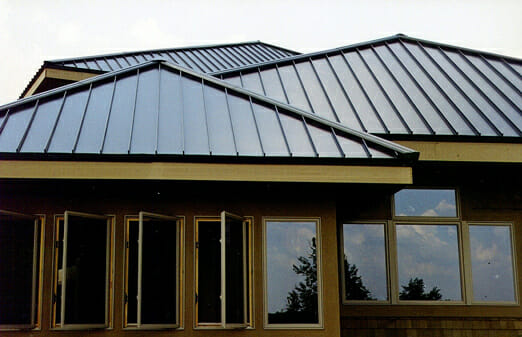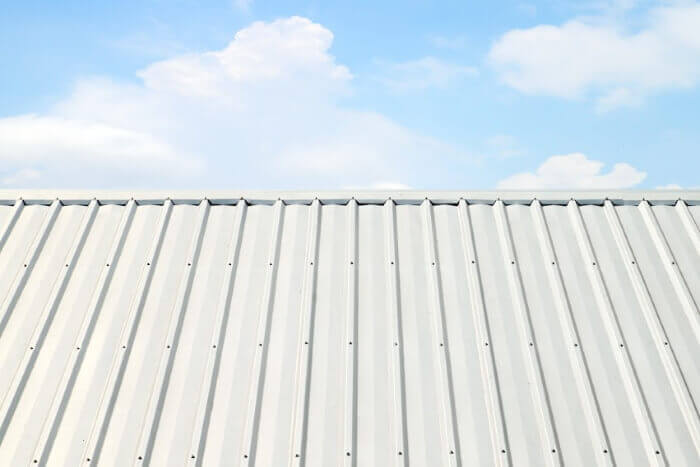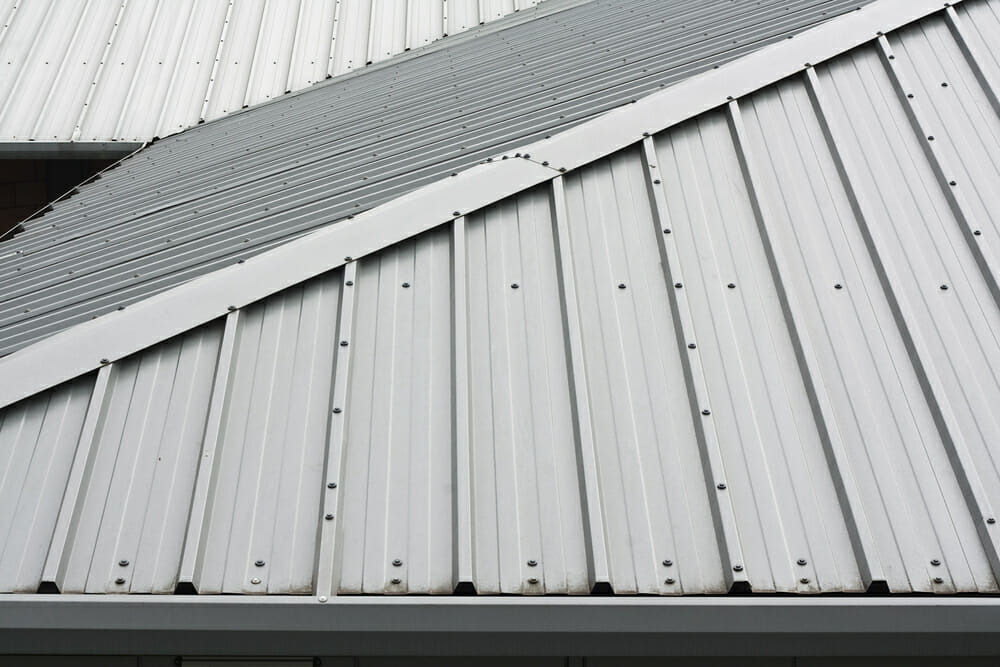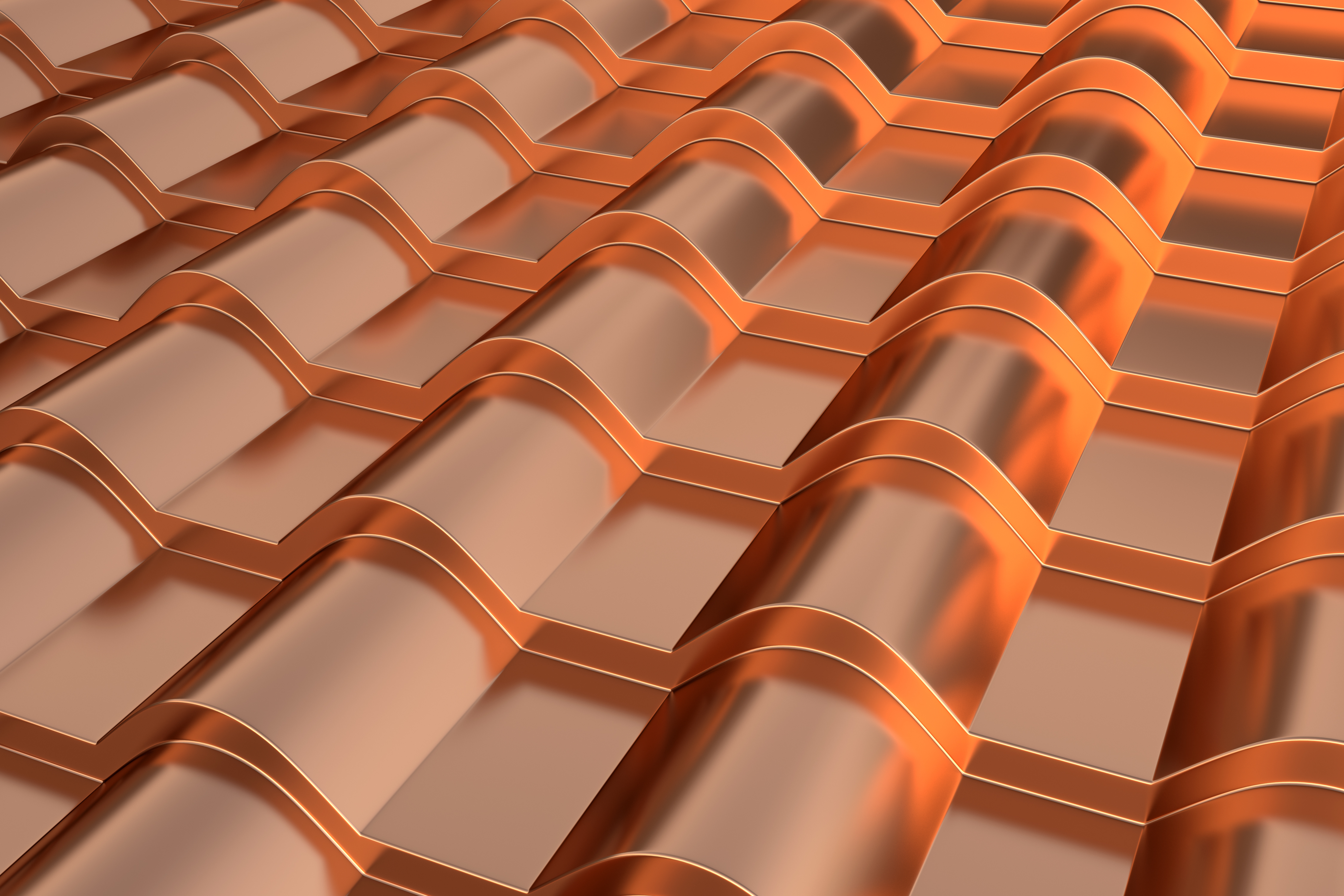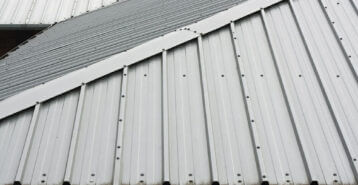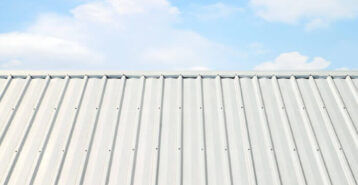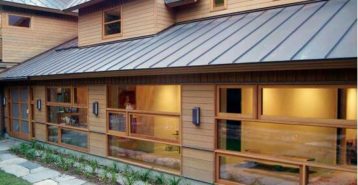Average Cost of Zinc Roofing
As of 2025, zinc roofing installation typically costs between $10 and $25 per square foot. For a 2,000-square-foot roof, that adds up to a total of $20,000 to $50,000, with most homeowners spending around $32,000. This estimate includes both materials and labor and reflects zinc’s premium quality and impressive 80- to 100-year lifespan.
Zinc Roofing Cost by Roof Size
Your roof’s size is one of the biggest factors in determining the final cost of your zinc roofing project. Larger roofs naturally require more materials and labor.
| Roof Size (Square Feet) | Estimated Cost Range |
|---|---|
| 1,000 | $10,000 to $25,000 |
| 1,500 | $15,000 to $37,500 |
| 2,000 | $20,000 to $50,000 |
| 2,500 | $25,000 to $62,500 |
| 3,000 | $30,000 to $75,000 |
Keep in mind that these are estimates. Complex roof designs, material choice, and contractor rates can push the final price higher or lower. Our roof installation cost calculator can give you a better idea of how much a full roof replacement will cost based on the type of roof, your roof size, and your location.
Zinc Roofing Cost by Type
Zinc roofing comes in a variety of styles. Each has its own aesthetic, installation process, and impact on overall cost. While standing seam and corrugated metal roofs are the most common types, flat lock panels and interlocking shingles are also available. Here’s a closer look:
| Zinc Roofing Type | Cost per Square Foot |
|---|---|
| Standing Seam Panels | $14 to $25 |
| Corrugated Panels | $10 to $14 |
| Flat Lock Panels | $14 to $20 |
| Interlocking Shingles | $15 to $20 |
Standing Seam Panels
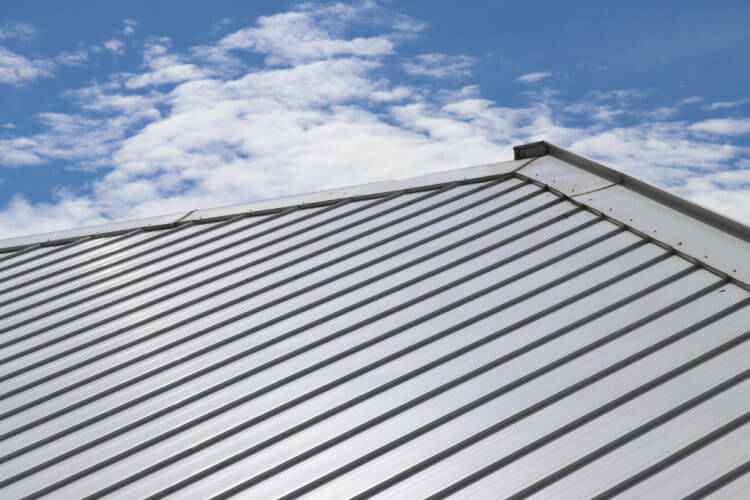
Standing seam metal roof panels are one of the most popular zinc roof styles, featuring vertical panels with raised seams that lock together. These panels provide strong protection against water intrusion and high winds, making them ideal for homes in areas with frequent storms.
Corrugated Panels
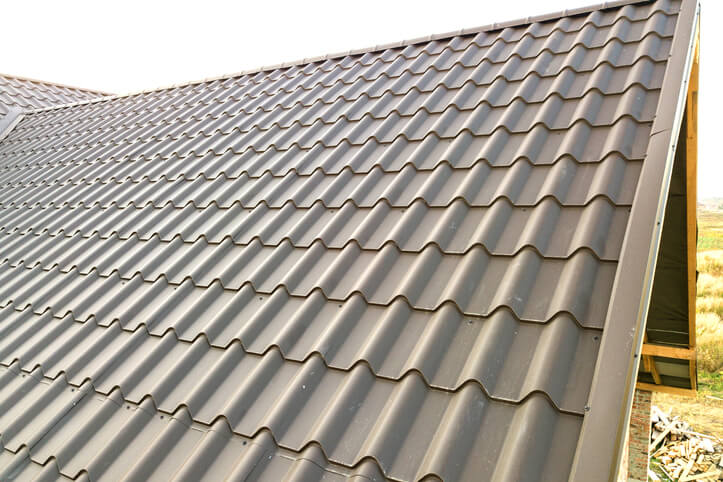
Corrugated metal panels are a practical, budget-friendly option. They have a wavy pattern that adds structural strength and helps water drain quickly. While often used in agricultural or industrial settings, modern finishes have made corrugated panels more common on residential homes, too.
Less Common Options
- Flat Lock Panels: These flat panels are installed in an overlapping grid and are often used for modern architectural designs. While they’re more labor-intensive to install, flat lock panels deliver a clean, contemporary look and excellent durability.
- Interlocking Shingles: Zinc shingles interlock on all sides, offering great resistance to wind and weather. This style is highly customizable and works well for complex roof shapes. The added labor and detailed installation make this one of the more expensive zinc options, but also one of the most attractive.
Benefits of Zinc Roofing
There are plenty of reasons why homeowners choose zinc roofing, and most of them come down to how well it performs over time. Let’s break down the biggest benefits:
Longevity
Zinc roofing has one of the longest lifespans out there, lasting 80 to 100 years or more. The only other material that comes close is copper, but that usually comes with a much higher price tag. If you’re looking for a long-lasting roof without going all-in on cost, zinc is a solid middle ground.
That impressive lifespan is thanks to zinc’s natural patina: a protective layer that forms as the metal ages. It shields the roof from damage and keeps it looking great year after year.
Durability
Zinc is tough. It’s fire-resistant, insect-proof, and helps prevent the growth of mold, mildew, and fungus. It’s also naturally corrosion-resistant, so it won’t rust or break down like some other materials, especially in places with high humidity or salty coastal air.
That same patina layer that extends its lifespan also protects the roof from long-term moisture and weather damage. It’s a great option for homes in just about any climate.
Low Maintenance
If you’re looking to cut down on routine maintenance, zinc delivers. After it’s installed, it mostly takes care of itself. The patina even repairs itself over time, covering up small scratches or damage without the need for touch-ups. That means less time on ladders—and more peace of mind.
Environmentally Friendly
Zinc roofing is a win for sustainability. It’s energy-efficient, reflecting sunlight to help keep your home cooler and cut down on summer energy bills. And when it finally does reach the end of its life, zinc is fully recyclable, making it a greener choice than many other materials.
Curb Appeal
Zinc roofs don’t just perform well — they look great doing it. Over time, the surface changes color from a shiny dark gray to a softer light gray or even blue, thanks to the natural aging process. It adds a unique, ever-changing character to your home that really stands out.
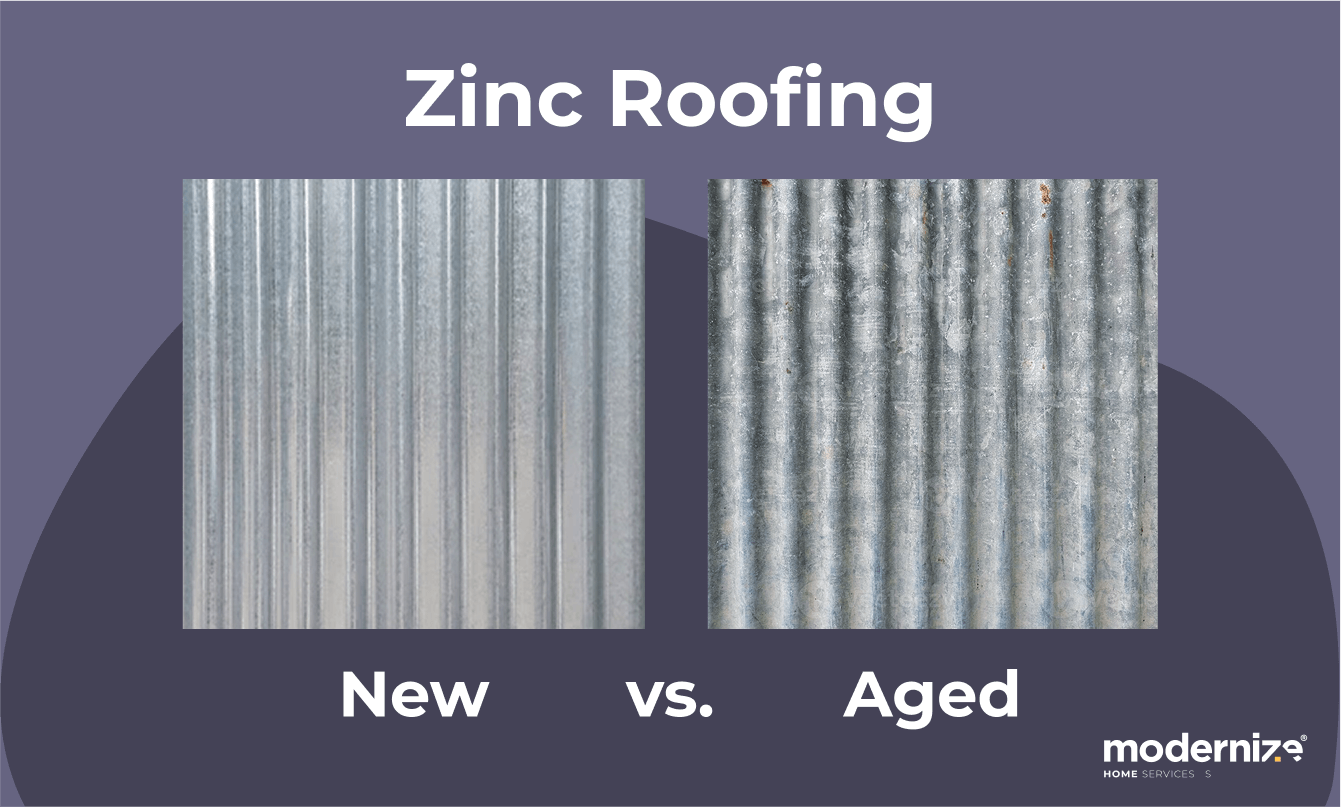
Additional Cost Factors
Beyond size and style, there are several other factors that can affect your final zinc roofing cost. Understanding these can help you better prepare for your project.
Roof Shape and Complexity
Roofs with multiple angles, dormers, valleys, or unique shapes require more time and labor to install. If your roof has lots of features, expect to pay more than you would for a simple, gable-style roof.
Location and Local Labor Rates
Where you live plays a big role in pricing. Labor rates can be significantly higher in urban areas or places with a high cost of living. Local demand and contractor availability can also affect how much you pay.
Type and Quality of Zinc
Zinc is available in different finishes, such as natural, pre-patinated, or coated. Pre-patinated zinc comes with a uniform color that mimics natural aging and is often more expensive than raw zinc. Higher-quality zinc materials also cost more but offer better performance and longevity.
Underlayment and Roof Decking
The materials beneath your zinc panels are just as important as the panels themselves. A high-quality underlayment improves moisture protection, and if your roof decking is damaged, it may need repairs or replacement, adding to your overall cost.
Removal of Old Roofing
If you need to tear off an existing roof before installing zinc, labor and disposal fees will add to your budget. However, starting with a clean base often results in a better, longer-lasting installation.
Permits and Inspections
Most roofing jobs require a permit, and some cities may also require inspections during or after the project. These costs vary by location but are important to factor into your total budget.
How to Save Money on Zinc Roofing Costs
Looking to make your zinc roofing project more affordable? Here are some tips:
- Get multiple quotes from licensed contractors to find competitive pricing.
- Schedule your project during the off-season, like late fall or early winter, when demand is lower.
- Stick with a simpler design to cut back on labor and materials.
- Compare zinc finishes — natural zinc is often more budget-friendly than pre-patinated or color-coated options.
- Ask about financing or payment plans to spread out your investment over time.
Zinc Roofing Replacement vs. Repair
Zinc is a tough material, but like any roof, it may eventually need some attention. Knowing when to repair and when to replace can help you make the most of your investment.
When to Repair
Repair is a good option if:
- Only a small area is affected by corrosion or damage.
- The roof is relatively new and still under warranty.
- You’re dealing with minor leaks around joints or flashing.
- Budget constraints make a full replacement unrealistic for now.
When to Replace
You should consider a full replacement if:
- The roof is nearing the end of its 80- to 100-year lifespan.
- There are widespread issues or multiple problem areas.
- Previous repairs haven’t solved recurring problems.
- You’re doing a major home upgrade and want a roof that matches.
- You want to improve energy efficiency with modern materials and insulation.
Zinc Roofing vs. Other Types of Roofing
Here’s how zinc compares with other popular roofing materials:
Zinc costs more than asphalt or aluminum, but it outperforms both in terms of lifespan, durability, and overall value.
DIY vs. Professional Installation
Installing a zinc roof is not a weekend DIY project. It takes experience, specialized tools, and precision to get it right. Mistakes during installation can lead to costly damage, leaks, or even void your warranty.
That said, DIY maintenance is doable with a bit of caution. Homeowners can:
- Clear leaves and debris regularly.
- Check seams and fasteners for signs of wear.
- Clean the roof surface gently — avoid abrasive tools or harsh chemicals.
Hiring a Qualified Roofing Contractor
Working with a licensed contractor ensures your roof is installed correctly and built to last. Modernize makes it easy; we’ll connect you with up to four vetted local contractors so you can compare quotes and get expert advice.
FAQ: Zinc Roofs
Is zinc good for roofing?
Yes, zinc is an excellent roofing material. It’s extremely durable, naturally corrosion-resistant, and can last 80 to 100 years with very little maintenance. Zinc also develops a self-healing patina that helps protect the roof from moisture, UV rays, and scratches. It’s energy-efficient, fire-resistant, and even recyclable, making it one of the most sustainable roofing options available.
What is a zinc roof?
A zinc roof is a type of metal roofing system made from zinc panels or shingles. It’s known for its sleek, modern look and ability to withstand harsh weather conditions. Over time, zinc develops a protective coating called a patina, which helps it resist corrosion and gives it a unique appearance that changes color as it ages.
What is the life expectancy of a zinc roof?
On average, a zinc roofing system has a life expectancy of 80 to 100 years, often outlasting the home it’s installed on. Thanks to zinc’s self-healing patina and natural resistance to rust, rot, and pests, it holds up well in a variety of climates and requires minimal maintenance over its long lifespan.
Are zinc roofs expensive?
Zinc roofs are considered a premium roofing option, with costs typically ranging from $10 to $25 per square foot installed. For a standard 2,000-square-foot roof, that comes out to about $20,000 to $50,000, depending on the roof style, complexity, and contractor rates. While the upfront cost is higher than materials like asphalt, the long lifespan and low maintenance requirements make zinc roofing a high-value, long-term investment.


